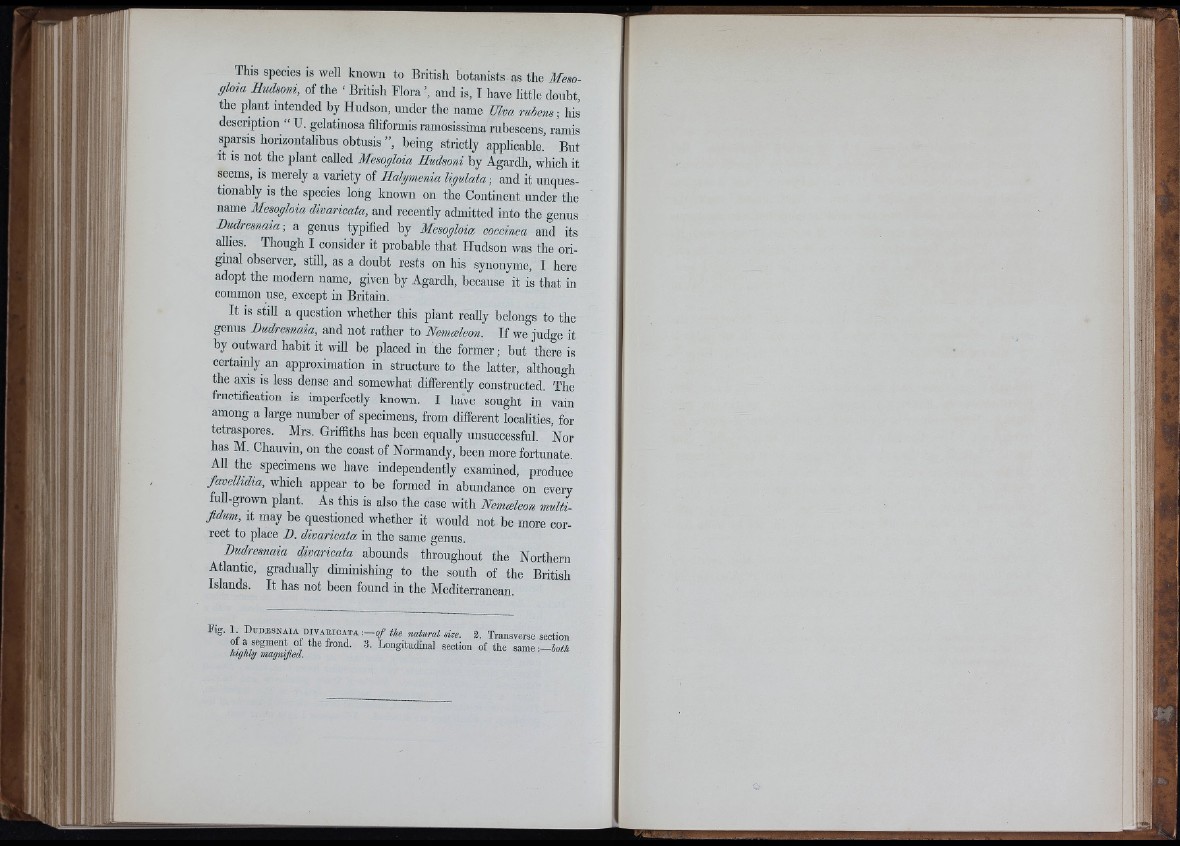
Ill:
This species is well known to Britisli botanists as the Mesogloia
Hudsoni, of the ‘ Britisli Flora and is, I have little donbt,
the plant intended by Hudson, under the name Ulva rubens -, his
description “ U. gelatinosa filiformis ramosissima rubescens, ramis
sparsishorizontalibusobtusis”, being strictly applicable.’ But
it is not the plant called Mesogloia Hudsoni by Agardh, which it
seems, is merely a variety of Halymenia ligulata ; and it unquestionably
is the species long known on the Continent under the
name Mesogloia divaricata, and recently admitted into the genus
Dudresnaia; a genus typified by Mesogloia coccinea and its
afiies. Though I consider it probable that Hudson was the original
observer, still, as a doubt rests on his synonyme, I here
adopt the modern name, given by Agardh, because it is that in
common use, except in Britain.
It is still a question whether this plant really belongs to the
genus Dudresnaia, and not rather to Nemceleon. If we judge it
by outward habit it will be placed in the former ; but there is
certainly an approximation in structure to the latter, although
the axis is less dense and somewhat differently constructed. The
fructification is imperfectly known. I have sought in vain
among a large number of specimens, from different localities, for
tetraspores. Mrs. Griffiths has been equally unsuccessful. Nor
has M. Chauvin, on the coast of Normandy, been more fortunate.
All the specimens we have independently examined, produce
favelhdta, which appear to be formed in abmidance on every
full-grown plant. As this is also the case with Nemceleon multifidum,
It may be questioned whether it would not be more correct
to place D. divaricala in the same genus.
Dudresnaia divaricata abounds throughout the Northern
Atlantic, gradually diminishing to the south of the British
Islands. It has not been found in the Mediterranean.
i f f - - - o f m e . 2 . Transverse section
of a set,ment of the frond. 3. Longitudinal section of the same 60//1
liigUy magmjied.
I